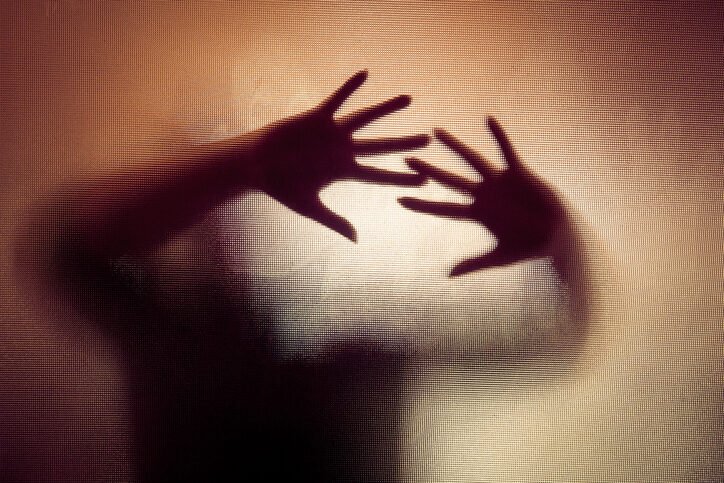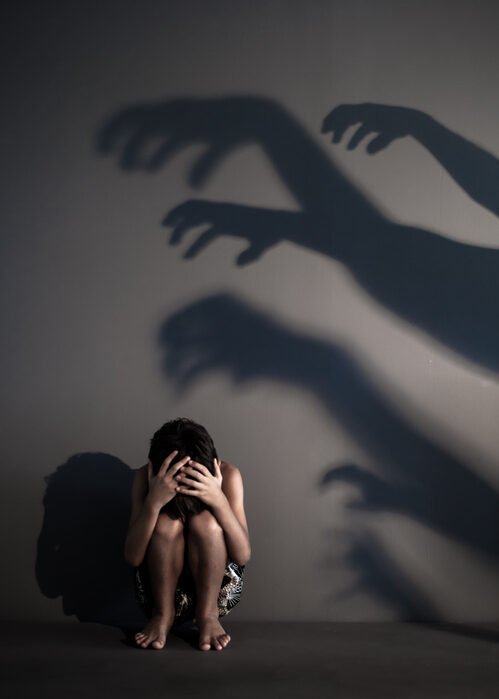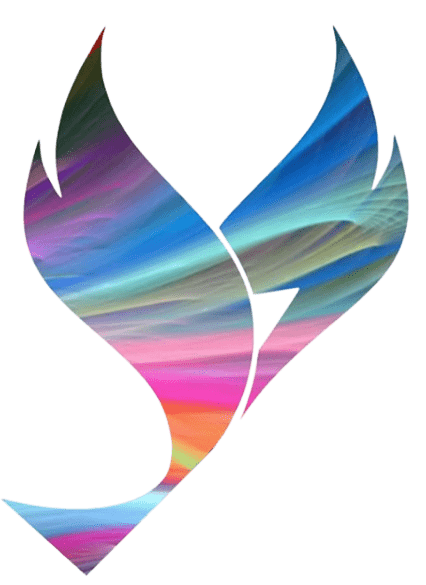Attics are used for many things.
Sometimes for play. Sometimes for storage. Sometimes for secrets. Too often for hiding.
One year ago today, I moved into an attic for the second time in my life. Instantly, the first attic came back to mind in a flash of childhood memory. A precious moment of safety: my mother below me on the ground floor, me above her in the attic. She reaching toward me, me ready to let go. She wishing me a good night, me knowing it would finally be so. Sweet dreams, little child.
Some men in my family couldn’t fit up there. So, they couldn’t hurt me. These types of monsters weren’t under my bed, but inside of me. The pressure. The nightmares made real. In the middle of the night they’d rape me at the home that was being renovated. To avoid the construction noise, my family moved into this small apartment with that perfect attic just big enough for my brothers and I to fit. A safe place to hide.
But eventually we had to return to our improved home where the incest abuse continued. There, I created an attic in my mind — an imaginary place where I could escape to feel safe. Every secret instance of incest I stored there. Then, my brain locked the door and kept the key. My subconscious became a place of hidden memory where the unwanted junk that couldn’t be thrown away, was held in a chest so I didn’t have to look at it everyday. All that was left was nightmares and pressure. Dissociative Amnesia — the inability to remember traumatic experiences — is common for children who suffer from incest abuse.

I moved out of my childhood home at 18 and suddenly became symptomatic — depression, anxiety, fatigue, fixation, pain. More nightmares. The monsters no longer lived under my bed, but were trapped in my head, inside my body. More pressure. The instances of incest stuffed into my mind’s attic could no longer fit. The door was bursting open, shaking the body below now broken. I showed up to listen.
My sweet inner child above me in the attic, me below her on the ground. Me reaching toward her, her not ready to come down. Me inviting her to a new day, her not believing she was safe. So instead, I climbed the proverbial stairs to meet her back in her attic, found the key, opened the locked chest of hidden memory, and welcomed back my secret history.
Memory retrieval for incest abuse survivors often happens long after the abuse took place. I was 24 years old. I disclosed what happened. My family chose to side with those who harmed me. The providers by day, monsters by night. Instead of the sister, the daughter. So I left home and everything I had ever known to seek safety, but I had nowhere to go.

It’s been hard to heal from incest when even mentioning the word makes people squirm. Society has an attic too. Subjects welcome to discuss in public and in homes, while so many of our stories are still stuffed into rooms above and silenced. The sweetness of our dreams trapped in nightmares. The missing of memories of safety so foundational to a healthy and fulfilling adult life. The silencing of incest survivors is historical.
One example was the Freudian Cover-Up. Sigmund Freud discovered childhood sexual abuse to be the root cause of women’s hysteria, only to recant his own research to protect his status when the aristocrats who were harming their children protested.
“The survivors are liars,” he said.
Then again in the 1980’s by The False Memory Foundation, founded by people who committed incest abuse, that worked to convince society and medical professionals that Dissociative Amensia wasn’t real. The memories of survivors were made up.
“The survivors are monsters,” they said.
Even after #MeToo went viral in 2017, incest abuse remains the silent subject that few speak about. Google it and find articles condoning it, questioning it, maybe a few helpful pieces about how to heal from it. The lack of representation and misrepresentation in the media continues to cause confusion at best and ignorance at worst around this taboo topic.
Children are left vulnerable in their homes. Survivors isolated in their healing. People who harm free to reoffend. All of us hiding in the attics in our heads, the homes with the monsters in our beds. Our lives living nightmares. The pressure on children to disclose and survivors to break their silence. To heal themselves without much help. To seek some sort of justice without the support of systems that are supposed to be just.
If you scroll down far enough, eventually my story will be found. I freed myself from society’s attic, broke the silence forced upon me, and published what happened on any outlets that would share it. I wanted to shift the narrative and raise awareness. I reclaimed my identity apart from how history held the stories of incest survivors.
“I am not a liar, but a truth teller,” I said.
“I am not a monster, but a messenger.”
Publishing the identity “incest survivor” digitally connected me to others doing the work to end incest. Together, we have been engaging the media for the authentic witness of our stories. Writing that reflects our solutions for prevention, intervention, recovery, and transformation. Although we have been speaking, we are still waiting to be heard. Hoping to be met at the top of the steps leading to the place we’ve been forced to reside, to hide, in the attic of our minds and society’s conditioned confines.
Then the day finally came. Roe vs. wade was overturned by the Supreme Court case Dobbs vs. Jackson. Suddenly, I listened as the word, “incest,” was spoken from the lips of President Joe Biden: “The healthcare crisis is women can’t get an abortion even in a case of incest, even in the case of rape.”
For months, I have heard the echos of legislators as they discuss exceptions to abortion bans — or the lack thereof — for rape and incest survivors (this distinction being unclear as incest is rape for many survivors including all who have been impregnated). The verbal conversation published in articles all over digital and print platforms using hypothetical cases of incest abuse to push progressive agendas for safe abortion access or defend fetal personhood regardless of the method of conception. For months, incest has been used as an assumed sensational narrative necessary to shock the public into action around abortion. Or, to debate whether the impregnation of a child by a family member is a worthy exception in anti-abortion legislation.
I hoped that when this word finally made headlines on this many platforms that I would feel relieved. But instead, I feel angry. For me and so many of my friends, incest isn’t hypothetical. Incest is our history. Our stories are not sensational. Our stories are real. More common than most want to admit. They should be shared with caution, consultation, conviction, and care.
Safe abortion access most certainly needs to remain available for all girls, women and pregnant persons, especially incest abuse survivors. But the truth that continues to be neglected from public discourse is that incest survivors should never have had to get abortions in the first place. If a child has been impregnated by a family member, then we are too late. We have failed as their community to keep them safe. Using the stories of incest survivors to push abortion legislation without discussing prevention is yet another violation. The right to safe abortion access in any case, most especially incest, is not up for debate.
Today, I sit in my new attic as the trauma compounds with this misrepresentation. The word that shares my story is finally being plastered all over the news for all the wrong reasons. The pain from being used over and over for someone else’s ends in the past has returned to the present once again. The nightmare continues. The pressure on me to now right and write this story.
The attic in my mind shakes. The monsters still in my head. I can’t sleep in bed. I practice the lessons learned in recovery to return to the present. I remember that I’m just remembering. Triggers. I remind myself in this safe space, in this small place: no one can hurt me here. I’m an adult now. No longer trapped in the attic of my mind, nor restricted by the confines of society’s expectations of silence. No longer under the weight of his body or my wounds.
Today, I have agency. Today is an opportunity.
In 2021, #MeTooIncest went viral in France. In response, the French government created the Independent Commission on Incest and Sexual Violence Against Children, which collected over 10,000 testimonies from childhood sexual abuse surivors, as well as interviewed a number of professionals in the field.
They published a report of their findings (translated to English by Incest AWARE), as well as proposed solutions. According to the report, 8 out of 10 participants are victims of incest, while 7 out of 10 victims have suffered the violence repeatedly. The report includes 20 recommendations that address how to create a “culture of protection” through methods of prevention, intervention, recovery, and the transformation of justice including:
- Systematic identification of victims by trained adults and professionals to relieve the burden of disclosure from children.
- Removing people who harm from homes immediately, while keeping the child in their safe and familiar home environments.
- Creating safer ways to guide victims through the judicial process.
- Financially compensating survivors to support their multi-disciplinary, lifelong healing efforts.
What is happening in France, can be replicated in the United States. They climbed the attic stairs of their social systems and took responsibility for what was hiding there. The reclamation of repressed memory must be a communal process to end cycles of violence. If US legislators are going to use the stories of incest survivors to inspire the public around abortion access, then they must also be committed to keeping children safe in the first place.
Together, we can develop a culture of protection that ensures that no child ever has to hide from their abusive family members in an attic too big for them to fit. Nor suffer the stuffing of their memories into the little attic in their minds to be processed too in life. That no adult survivor should have to rent an attic where no one can find her to feel safe from a society that has silenced her story in its own confined space. Or, get an abortion from a forced rape by a family member.
Today, I say farewell to this attic and all the ones that came before. I choose to no longer hide in a space way too small for the bigness of me and my dreams for safety. I share the memories stored in the attic of my mind, the pressure of my body, publicly now. I still have nightmares. Still manage the monster in my body. Still struggle to sleep in my bed. But none of it keeps me from dreaming and working toward a future where attics are only ever used to store meaningful objects packed with safe memories. Or for pretend and the expansion of the imagination. Where children hide and seek for play. Where they sleep for fun. And when they are wished goodnight from the safe caregiver standing below, we can all trust it will finally be so.
Sweet dreams, little child. Sweet dreams, inner child.
Thank you to Anuj Sahu for their inspired edit on this piece and everyone else on the Humanity team.
If you are interested in submitting a piece to the DG Sentinel, please visit our submissions page here.
Yuvoice uplifts diverse voices around the world. We focus on perspectives of real people living through history and how Planet Earth looks through their eyes. We never necessarily endorse, promote, or agree with the pieces we publish. We want to showcase viewpoints of all types. Please check out our Statement of Global Progress for further information on our stance. And if you’ve enjoyed this piece, please drop a comment and support the author!
